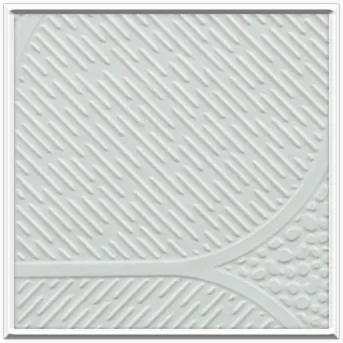- Afrikaans
- Albanian
- Amharic
- Arabic
- Armenian
- Azerbaijani
- Basque
- Belarusian
- Bengali
- Bosnian
- Bulgarian
- Catalan
- Cebuano
- Corsican
- Croatian
- Czech
- Danish
- Dutch
- English
- Esperanto
- Estonian
- French
- German
- Greek
- Hindi
- Indonesian
- irish
- Italian
- Japanese
- Korean
- Lao
- Malay
- Myanmar
- Norwegian
- Norwegian
- Polish
- Portuguese
- Romanian
- Russian
- Serbian
- Spanish
- Swedish
- Thai
- Turkish
- Ukrainian
- Uzbek
- Vietnamese
stu . 05, 2024 16:04 Back to list
frp ceiling grid
Exploring FRP Ceiling Grids Advantages and Applications
Fiber Reinforced Polymer (FRP) ceiling grids are becoming increasingly popular in various construction and architectural designs. These innovative materials offer a range of advantages over traditional ceiling grid systems, making them an attractive choice for many projects. This article delves into the benefits, applications, and considerations of using FRP ceiling grids.
What is FRP?
FRP, an abbreviation for Fiber Reinforced Polymer, is a composite material composed of a polymer matrix reinforced with fibers, typically glass or carbon. This unique combination results in a lightweight yet strong material that exhibits excellent durability, resistance to corrosion, and low maintenance requirements. FRP products have been used in various industries, including aerospace, automotive, and construction, where high performance and reliability are crucial.
Advantages of FRP Ceiling Grids
1. Corrosion Resistance One of the most significant advantages of FRP ceiling grids is their resistance to corrosion. Unlike traditional metal grids, which can rust or corrode over time, FRP remains unaffected by moisture, chemicals, and environmental conditions. This property makes FRP an ideal choice for environments prone to humidity, such as bathrooms, kitchens, and industrial settings.
2. Lightweight FRP ceiling grids are considerably lighter than their metal counterparts. This reduced weight translates into easier installation, decreased structural load, and lower transportation costs. Contractors can efficiently handle and install FRP grids, reducing labor time on projects.
3. Non-conductive FRP materials are non-conductive, which enhances safety in environments where electrical hazards are a concern. Buildings that accommodate sensitive electronic equipment or machinery benefit from using non-conductive ceiling grids, minimizing the risks associated with electrical interference or short circuits.
frp ceiling grid

4. Aesthetic Flexibility FRP ceiling grids come in various designs, colors, and finishes, providing architects and designers with aesthetic flexibility. Customization options allow for unique ceiling designs that can complement the overall theme of a building, adding to its visual appeal.
5. Durability FRP ceiling grids are highly durable and can withstand wear and tear better than traditional materials. Their resistance to impacts and scratches ensures that they retain their appearance over time, making them a cost-effective solution for long-term use.
Applications of FRP Ceiling Grids
FRP ceiling grids are versatile and can be used in various settings. They are becoming increasingly popular in commercial buildings, such as offices, shopping malls, and hospitals. Additionally, these grids are highly suitable for industrial applications, including manufacturing plants, food processing facilities, and chemical processing units, where durability and cleanliness are paramount.
Considerations for Installation
While FRP ceiling grids offer numerous benefits, it is essential to consider specific factors during installation. Proper installation techniques and adherence to manufacturer guidelines are crucial for maximizing the performance of FRP systems. Additionally, while FRP may initially have a higher upfront cost than traditional materials, its longevity and reduced maintenance can lead to long-term savings.
Conclusion
In conclusion, FRP ceiling grids present a modern solution for various architectural and construction needs. With their corrosion resistance, lightweight nature, aesthetic flexibility, and durability, they are an excellent choice for both commercial and industrial applications. As the demand for innovative materials continues to grow, FRP ceiling grids are poised to play a significant role in the future of construction design.
-
Transform Interiors with PVC Gypsum Ceiling: A Stylish, Durable, and Moisture-Resistant SolutionNewsMay.19,2025
-
The Smart Interior Upgrade: Discover the Durability and Versatility of Gypsum Ceiling Access Panel SolutionsNewsMay.19,2025
-
The Smart Choice for Interior Design: Discover the Value of PVC Gypsum Ceiling SolutionsNewsMay.19,2025
-
Mineral Fiber Ceiling Tiles: The Smart Blend of Performance and AestheticsNewsMay.19,2025
-
Mineral Fiber Ceiling Tiles: The Superior Choice Over Gypsum for Sound and Fire SafetyNewsMay.19,2025
-
Mineral Fiber Ceiling Tiles: Eco-Friendly Strength and Style for Every CeilingNewsMay.19,2025







